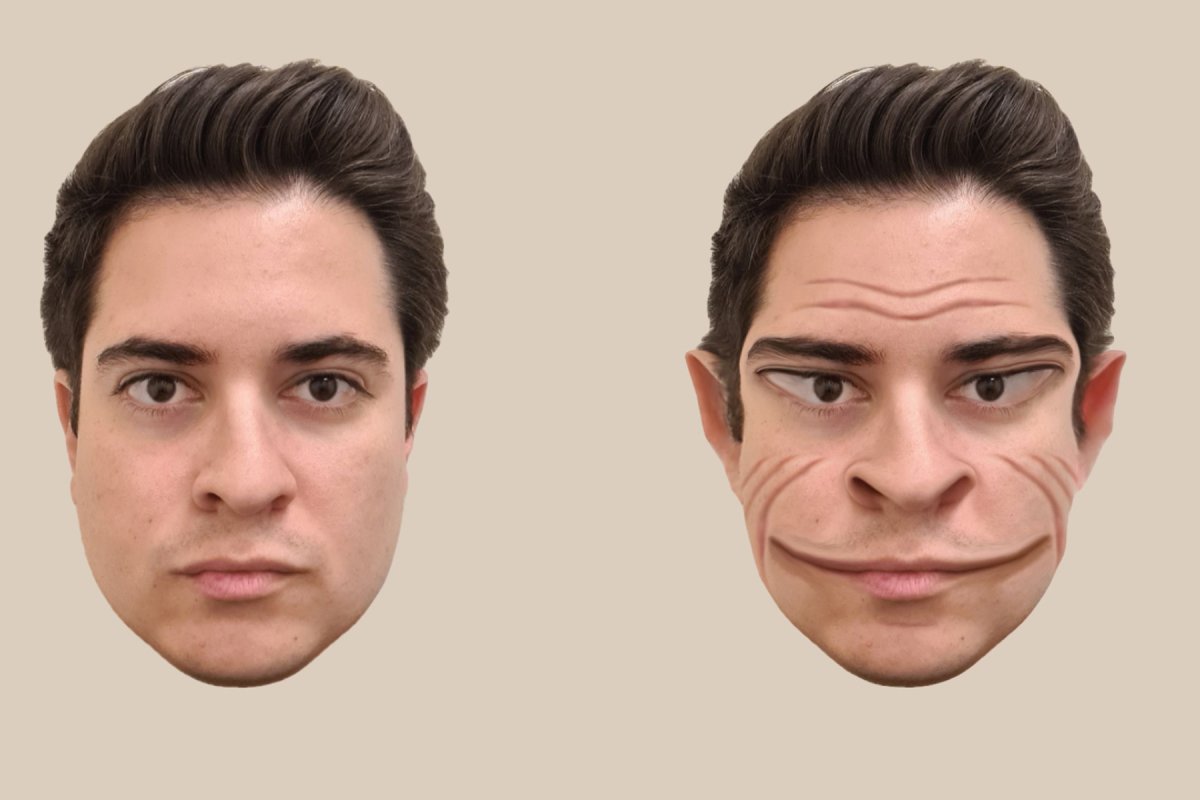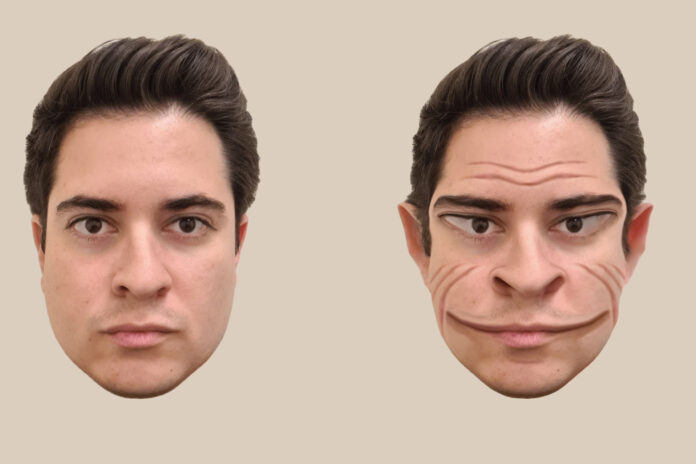Some people see others’ faces as disturbing, distorted demons, and it’s all down to a strange medical condition.
This condition is named prosopometamorphopsia (PMO), and causes people to perceive others as having faces with altered shapes, colors, sizes and facial feature positions.
Now, in a new paper in the journal The Lancet, researchers have revealed what people with PMO see when they look at others. This is the first paper to provide photorealistic representations of the facial distortions seen by those with PMO.
A. Mello et al.
These pictures are based on what is seen by a 58-year-old patient with PMO who has a unique case of the condition, meaning that when he sees faces in real life they are distorted, but if they are on a screen, they aren’t.
This made him a prime candidate for studying the condition, as the researchers could ask him how accurate the distorted versions of faces they made on the screen were, compared with his real-life experience.
“In other studies of the condition, patients with PMO are unable to assess how accurately a visualization of their distortions represents what they see because the visualization itself also depicts a face, so the patients will perceive distortions on it too,” lead author Antônio Mello, a PhD student in the Department of Psychological and Brain Sciences at Dartmouth, said in a statement.
“Through the process, we were able to visualize the patient’s real-time perception of the face distortions.”
The exact cause for the condition is still unclear, but theories have suggested that it may arise due to damage or issues with brain areas including the fusiform face area (FFA) or the superior temporal sulcus (STS), or even a manifestation of epilepsy.
The condition is rather rare, with only about 75 case reports about people with PMO having been published.
The severity of the condition varies from person to person, with different parts of the face being affected, and different factors—shape, size, color—being more impacted than others. The length of time which a person is affected by PMO can also vary, lasting for “days, weeks, or even years,” according to the researchers.
In the paper, the authors describe how they created these representations. They first took a picture of a person’s face, then showed the patient the picture on a screen while he also looked at that person’s face in real life. They then modified the picture on the screen until it matched the patient’s perception of the person, using his input in real time.

A. Mello et al.
The researchers hope that this study will help PMO be taken more seriously by health professionals, as often people are dismissed as having another mental health condition.
“We’ve heard from multiple people with PMO that they have been diagnosed by psychiatrists as having schizophrenia and put on anti-psychotics, when their condition is a problem with the visual system,” senior author Brad Duchaine, a professor of psychological and brain sciences and principal investigator of the Social Perception Lab at Dartmouth, said in the statement.
“And it’s not uncommon for people who have PMO to not tell others about their problem with face perception because they fear others will think the distortions are a sign of a psychiatric disorder,” says Duchaine. “It’s a problem that people often don’t understand.”
Do you have a tip on a science story that Newsweek should be covering? Do you have a question about PMO? Let us know via [email protected].
Uncommon Knowledge
Newsweek is committed to challenging conventional wisdom and finding connections in the search for common ground.
Newsweek is committed to challenging conventional wisdom and finding connections in the search for common ground.


